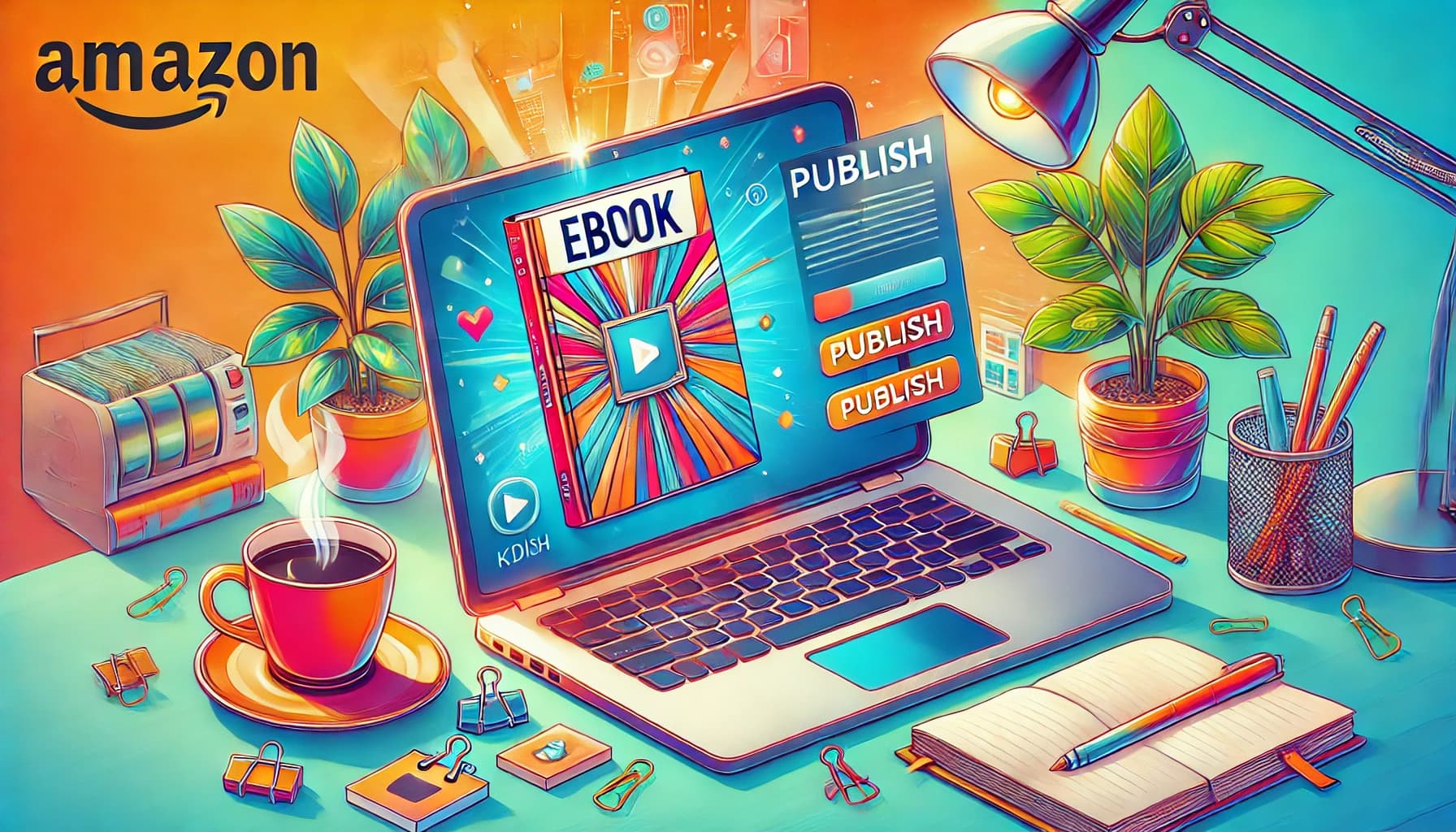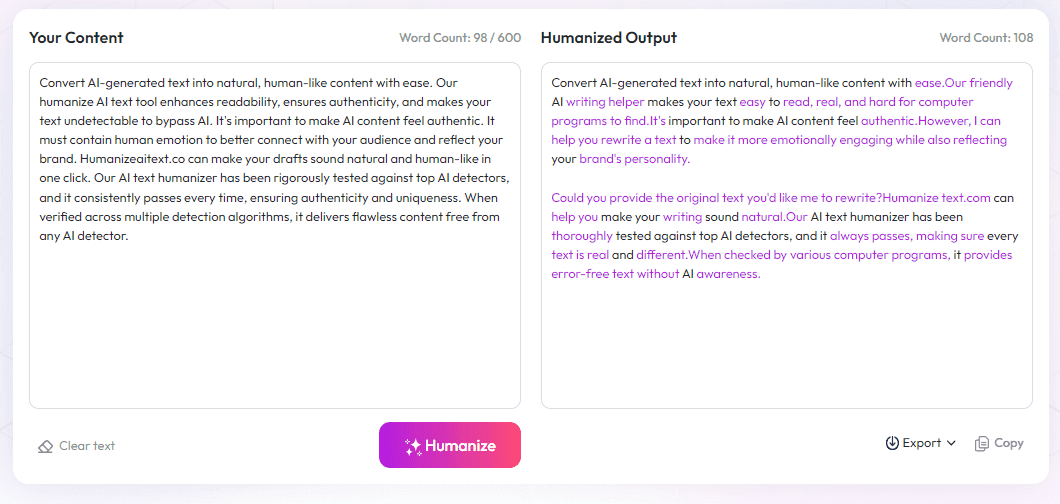Table of Contents
Are you thinking about self-publishing but unsure where to start? I get it—there are so many options out there that it can feel overwhelming. Well, stick with me, because if you keep reading, I’ll point you to the best platforms where your work can shine in 2025.
In this quick guide, I’ll reveal the top self-publishing spots for authors like you. Whether you’re aiming to sell e-books, print copies, or both, I’ve got the scoop on where your book will get the attention it deserves.
Keep reading, and I’ll share a snapshot of the current best platforms so you can make a confident choice and get your book out into the world.
Key Takeaways
Key Takeaways
- Amazon KDP remains the top choice for self-publishing around the world, offering easy setup and high royalties on eBooks and print books.
- Draft2Digital is perfect if you want to distribute your book to multiple retailers, handling formatting and metadata for you.
- IngramSpark is ideal for authors wanting their physical books in stores and libraries, despite higher setup costs.
- Smashwords helps reach many eBook stores and libraries, especially for niche genres or illustrated books.
- Expect to spend around $3,000 to $5,700 on editing, covers, formatting, and marketing in 2025.
- Effective marketing involves building an online presence, gathering reviews, and promoting through social media or ads.
- Good formatting and professional design are key to creating an attractive, readable book that appeals to readers.
- Using AI tools can speed up editing, idea generation, and promotional tasks, freeing you to focus on writing.
- Prepare your manuscript by cleaning up errors, formatting files correctly, designing a compelling cover, and writing a strong description before publishing.

Where to Self-Publish: Top Platforms in 2025
Self-publishing has seen a huge surge over the past few years. In 2023, the number of self-published titles with ISBNs climbed by 7.2% over the previous year, reaching over 2.6 million titles. This means authors are choosing the independent route more than ever before, outpacing traditional publishing by more than two million titles. While traditional publishers released around 563,000 titles in 2023, self-publishing now dominates the scene, with output skyrocketing by 264% in just five years.
So, if you’re thinking about taking the self-publishing plunge, where can you get started? Here are some of the best platforms in 2025 to turn your ideas into published books and reach readers worldwide.
Amazon Kindle Direct Publishing (KDP)
When it comes to self-publishing, Amazon’s Kindle Direct Publishing tops the list for good reason. It’s one of the most popular platforms, accounting for a large chunk of the estimated 300 million self-published books sold annually worldwide. With KDP, you can publish both eBooks and paperbacks, and since Amazon is the largest online bookseller, your work can quickly gain visibility. Setting up a KDP account is straightforward, and you keep a significant share of the royalties—up to 70% for eBooks.
Many authors rave about the ease of using KDP’s tools for formatting and distribution, but it's also smart to keep in mind the costs involved, which typically range from a few hundred to a few thousand dollars if you hire professional services like editing and cover design. A common trick? Use tools such as best fonts for book covers to make your cover stand out.
Draft2Digital
If you're aiming to distribute your book across multiple platforms, Draft2Digital is an excellent choice. It acts as a bridge, converting your manuscript into compatible formats for a wide network of retailers like Apple Books, Kobo, and Barnes & Noble. Setting up your account on Draft2Digital is free, and they handle much of the nitty-gritty for you, such as formatting and metadata. The platform earns a small commission, but the benefit is wide reach and professional presentation.
IngramSpark
Looking to get your physical books into bookstores or libraries? IngramSpark makes that possible. It’s a trusted platform used by many indie authors to distribute paperbacks and hardcovers globally. It requires an upfront setup fee and professional-quality print files, but the access to a vast distribution network can lead to serious sales, especially if you’re interested in traditional retail channels. For tips on creating eye-catching covers, check out best fonts for book covers.
Remember, self-publishing costs in 2025 typically range between $2,940 and $5,660, depending on your choices for editing, formatting, and cover design. Doing thorough research and choosing the right platform can make your journey smoother and more profitable.
Smashwords
For authors looking to reach audiences on many different eBook stores without much fuss, Smashwords is a good bet. It compiles your work into multiple formats and distributes it to dozens of retailers and libraries. It’s especially popular among authors of niche genres, thanks to its straightforward setup. Plus, Smashwords offers a helpful guide on how to publish a coloring book, if you're venturing into illustrated content.
As self-publishing becomes more mainstream, choosing the right platform depends on your goals—whether that’s broad distribution, hardcover sales, or niche reach. These top platforms will be your best allies in 2025 to turn your manuscript into a sellable, published book.

How to Choose the Right Self-Publishing Platform for Your Book
Picking the best platform depends on your goals, genre, and how much control you want over the process.
Start by considering whether you want broad distribution or niche audiences, then compare features and costs.
If your main goal is easy access to Amazon’s vast customer base, KDP is the way to go; for wide retail reach, Draft2Digital or IngramSpark might suit you better.
Look into each platform’s royalty rates, payout methods, and whether they support your preferred formats.
Checking user reviews and success stories can give you insights into what works well for authors in similar situations.
Don’t forget to evaluate technical requirements like file formatting, cover specifications, and whether they support low-content or illustrated books.
Ultimately, matching your needs with platform strengths will make your self-publishing journey smoother and more profitable.
Understanding the Costs of Self-Publishing in 2025
Self-publishing isn’t free, but breaking down the costs helps you plan your budget better.
On average, expect to spend between $2,940 and $5,660 for everything from editing to marketing, depending on your choices.
Editing often takes a significant chunk—professional copyediting can cost anywhere from $500 to $2,000.
Cover design is another vital expense; high-quality covers can range from $200 to over $1,000.
Formatting services ensure your book looks good on all devices and formats, costing roughly $300–$700.
If you opt for print copies via IngramSpark, printing costs add up based on page count and cover type, but bulk orders can reduce per-unit expenses.
Marketing and promotion might include cover reveals, ads, or book launch events, which you can scale to fit your budget.
Tracking these expenses helps prevent overspending and gives you a realistic idea of your return on investment.
Tips for Marketing Your Self-Published Book Effectively
Getting your book in front of readers takes more than just hitting "publish."
Create a solid launch plan with pre-orders, cover reveals, and social media teasers.
Build an author platform early—use social media, mailing lists, or a website to connect with potential readers.
Gather reviews by sending advance copies to bloggers or beta readers who can spread the word.
Utilize keywords and categories wisely when listing your book on platforms like Amazon to improve discoverability.
Consider running targeted ads on Amazon, Facebook, or BookBub to boost visibility.
Engage with your audience regularly—respond to comments, share behind-the-scenes content, and stay active online.
Partner with other authors or participate in virtual events to expand your reach.
Remember, consistent effort often pays off more than a one-time promotion, so keep promoting even after the launch wave subsides.
Best Practices for Formatting and Designing Your Self-Published Book
A well-formatted book looks professional and makes reading a pleasure for your audience.
Use clear, legible fonts and consistent styles for headings, body text, and dialogue.
Pay attention to margins, line spacing, and paragraph indents to ensure readability across devices.
Include a captivating cover that reflects your genre—use the tips in best fonts for book covers for ideas.
Format your manuscript according to platform specifications—each platform has its own preferred file types like MOBI, EPUB, or PDF.
Break up long blocks of text with subheadings, images, or bullet points to make content more engaging.
Proofread thoroughly or hire a professional to catch typos, grammatical errors, and formatting issues.
Invest time in creating a professional-looking interior; it’s the first impression readers will get of your book.
How to Use AI Tools to Improve Your Self-Publishing Process
Artificial intelligence can save you time, help with content creation, and refine your writing.
Use AI-powered editing tools like Grammarly or ProWritingAid to catch mistakes and improve clarity.
Generate ideas for book plots, titles, or character names with AI prompts—try this AI research tools to gather inspiration.
Leverage AI for keyword optimization and Amazon listing improvements to boost discoverability.
Explore AI-assisted cover design options that can give you a professional look without breaking the bank.
Automate social media posts or email campaigns to keep your audience engaged without extra hassle.
Remember to review AI-generated content carefully—human touch still matters to keep your voice authentic.
Using these tools wisely can help streamline your workflow and free up time for writing and marketing.
How to Prepare Your Manuscript for Self-Publishing
Getting your manuscript ready involves several key steps before hitting "publish."
First, clean up the manuscript by removing typos, inconsistencies, and formatting issues.
Next, format your file according to the platform’s specifications; many authors use tools like Scrivener or Atticus for this task.
Make sure your interior layout works well on both eReaders and print—consider different font sizes and line spacing.
Create a compelling book cover—either design it yourself using a template or hire a designer.
Write a persuasive book description that hooks potential readers and includes relevant keywords.
Prepare any additional materials, such as author bios, acknowledgments, or disclaimers.
Finally, upload your files carefully, double-check all details, and keep backup copies of your manuscript.
FAQs
Popular platforms include Amazon Kindle Direct Publishing (KDP), Draft2Digital, Smashwords, and Lulu. These options offer wide distribution, easy-to-use interfaces, and support for both e-books and print-on-demand services.
Consider factors like royalty rates, distribution reach, ease of use, available formats, and whether they support print or digital only. Match your publishing goals with platform features for the best fit.
Yes, many authors publish across multiple platforms to maximize reach and sales. Just ensure you understand each platform’s rules, especially regarding exclusivity or distribution rights.
Self-publishing offers control over content, pricing, and marketing. It also allows quicker release times and a potentially higher percentage of profits compared to traditional publishing routes.



